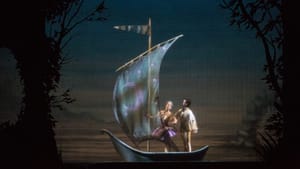Stay in the Loop
BSR publishes on a weekly schedule, with an email newsletter every Wednesday and Thursday morning. There’s no paywall, and subscribing is always free.
Beautiful dreamer
Pennsylvania Ballet presents Tchaikovsky's 'The Sleeping Beauty'

If I had an eight-year-old child who loved fairytales and sparkly costumes, I would want their first ballet to be the Pennsylvania Ballet’s production of Tchaikovsky’s The Sleeping Beauty (with choreography conceived by Marius Petipa and updated by Ángel Corella). Many parents seemed to have the same idea on Friday night, and little girls in shiny dresses dashed down the aisles, including one seasoned veteran who lugged her booster seat like a trouper. In a ballet that ran over two and a half hours, the only sound I heard from a child was a gasp that fell into an inopportune pause in the music.
For those who missed out on the fairytales of Perrault and the Brothers Grimm, Sleeping Beauty tells the story of Princess Aurora, cursed in infancy at her christening party. The king and queen invited her fairy godmothers who bestowed their gifts on the child. Alas! An evil fairy received no invitation and, in revenge for the slight, cursed the child: on her 16th birthday she would prick her finger on a spindle and die. The last good fairy came to the rescue with a final gift: the princess would not die but would sleep for 100 years, when true love’s kiss would awaken her.
Ingredients for a fairytale ballet
To keep an audience that includes young children in its seats for a full-length story ballet, you need three things: sets and costumes that draw the audience into the fantasy; music that creates the mood and texture of the piece; and dance that dazzles the eye. The Sleeping Beauty offered all three in abundance.
Sets and costumes, courtesy of the Boston Ballet, were fabulous. The curtain opened on a sumptuous royal court with gilded Corinthian columns and red curtains so like those of the Academy they seemed to be a part of the building. Guests at the christening party wore gowns in bright reds and golds, and the fairies wore elaborately jeweled bodices above pastel tutus. The evil fairy’s carriage would have suited the Road Warrior, if not for its black glitter and the four liveried creatures that drew it. A boat with a gossamer sail carried the prince on his quest for the sleeping princess. Both were magical.
Tchaikovsky’s score, commissioned for the ballet, is just about perfect. Its gavottes, marches, and waltzes are all lushly romantic and keenly attuned to the action. The “Sleeping Beauty Waltz” is deservedly considered one of the most beautiful pieces of music in ballet. In his prelude, Corella said that although he cut a few short bits, he did not shorten the ballet; he could not bear to lose a bit of the glorious music. I understood completely.
The dancing was everything my eight-year-old self would have hoped. The fairies each performed their solos, fluttering fingers like wings. Mayara Pineiro performed feats of strength and balance as Aurora greeting the four princes at her 16th birthday party in Act One, and in Act Three the pas de deux with Arian Molina as her prince featured a lovely sequence of dive lifts. The Lilac Fairy held the ballet together, directing the story and providing its heart in the warmth of Dayesi Torriente’s dancing.
The men of Act Three
The Sleeping Beauty offers very few opportunities for the men to shine. In that sense, the most engaging dancing came in Act Three, which included the aforementioned pas de deux, the bluebird’s pas de deux with Princess Florine, and the short dances of the fairytale guests. Austin Eyler’s wolf was sharp and sly, exuding personality even behind a wolf-head mask as he chased Little Red Riding Hood. The white cat and Puss in Boots brimmed with sexy feline exuberance. While I recognized the artistry and technique required throughout the ballet, it came alive in the connections between these dancers. But my eight-year-old self would have loved the fairy dances best of all.
What, When, Where
The Sleeping Beauty. Music by Pyotr Ilyich Tchaikovsky, choreographed by Marius Petipa, adapted by Angel Corella. Pennsylvania Ballet. Through October 22, 2017, at the Academy of Music, 240 S. Broad Street, Philadelphia, (215) 893-1999 or paballet.org.
Sign up for our newsletter
All of the week's new articles, all in one place. Sign up for the free weekly BSR newsletters, and don't miss a conversation.
 Camille Bacon-Smith
Camille Bacon-Smith